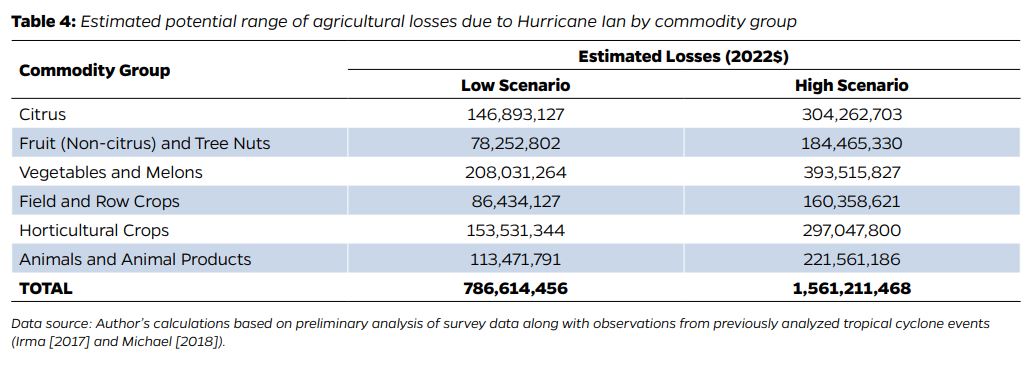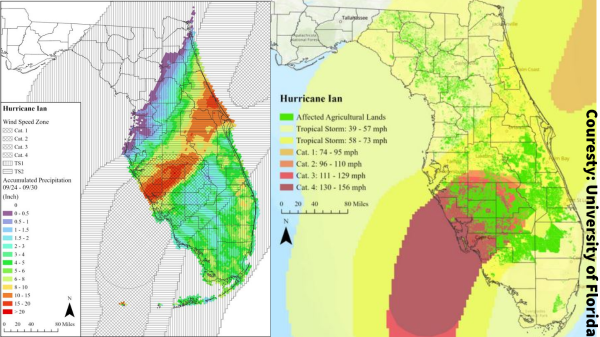From the University of Florida’s Food and Resource Economics Department:
Hurricane Ian made landfall in the United States as a Category 4 system on September 28 on Cayo Costa Island, followed by a second landfall on the southwestern peninsula of Florida near Punta Gorda.
Afterwards, Ian crossed the peninsula, downgrading to a tropical storm once the center of the system was well inland. Eventually, Ian entered the Atlantic Ocean as a tropical storm, regaining Category 1 hurricane status just before making a third landfall in South Carolina. Hurricane Ian impacted nearly five million acres of agricultural lands (~60% of which is grazing land) that produce over $8.12 billion dollars of agricultural products (crops, livestock, aquaculture, etc.) throughout a calendar or marketing year, some with multiple growing seasons or year-round production.

The production agricultural sector frequently experiences substantial adverse impacts following tropical cyclone events. Producers might experience losses (changes in economic flows) resulting from a change in the level or value of sales or a change in input costs and they might also experience damages (changes in economic stocks) that require repair or replacement.
Agricultural losses might result from situations such as fruit drop in a citrus grove, a flooded field of vegetables, dumped milk at a dairy farm due to cold storage not being available during a power outage, or even a lower sales price for a rancher that had cattle that were not able to get the appropriate nutrition due to stress or flooded grazing lands.
Agricultural assets at risk for damages include farm homes, farm buildings, greenhouse and nursery structures, machinery/equipment, fencing, irrigation systems, other infrastructure, livestock animals, and perennial plantings such as citrus trees and vineyards.
The UF/IFAS Economic Impact Analysis Program began collecting information on agricultural losses and damages resulting from tropical cyclone events in 2016 in the wake of Hurricane Irma and has been improving baseline and impact databases for these types of analyses since.
On September 29, 2022, The UF/IFAS Economic Impact Analysis Program distributed the Assessment of Losses and Damages to Florida Agriculture from Hazard/Disaster Events to begin assessing losses and damages associated with Hurricane Ian. Updates on this assessment process and results related to the impacts of Hurricane Ian will be shared on this page as they are available.



